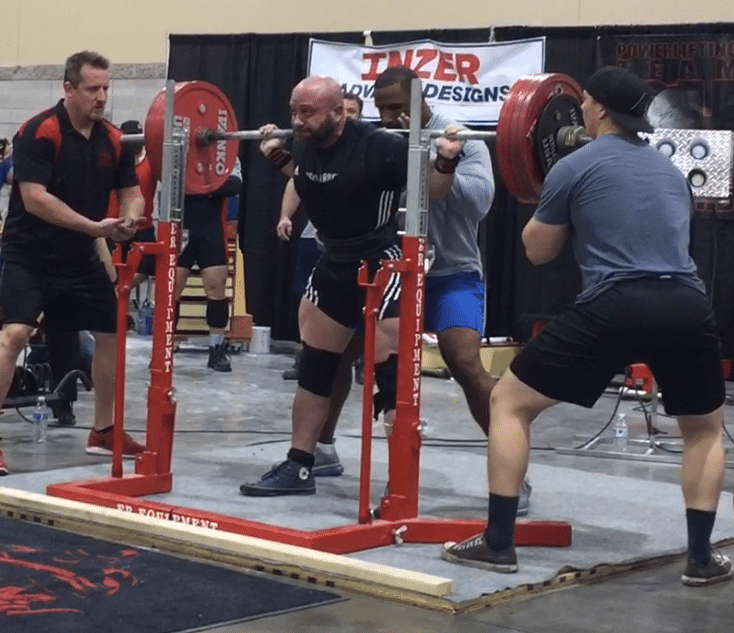
The squat is one of my favorite exercises. It is a full body exercise that develops full body strength and power. Unfortunately, it is one of the most poorly executed movements in strength training. I can’t count the times someone has watched me squat and says things like, “My knees hurt just watching that!” or “My back would be out for days if I tried that.” Well that is probably true, but for the most part it is because just about everyone that has come to me for squat instruction is doing…… Not a squat… Well, they are putting a bar on their back and going up and down, but that’s about it. It doesn’t matter if you are training for general strength, Crossfit, or powerlifting, the fundamentals of the squat are the same.
In my early 20s I suffered a severe back injury while squatting which I still feel the remnants of today. It kept the bar off my back for over a decade. The good news is, I was able to make corrections in my 30s that allowed me to break my all time PRs of my 20s at 40 years old.
Here are some key points of the squat that can make all the difference.
MASTER THE SETUP AND WALKOUT
The setup is your first rep (I stole this from someone, I just don’t remember who). It is crucially important for a successful and safe lift. Set the bar height so you don’t have to tippy toe the bar off the rack (this is a great way to crank your back and a true sign of the novice). Get both feet underneath you. Keep your lower back in a neutral position; a lower back arch on the squat is a great way to injure your back. Wedge yourself underneath the bar. Some people like to think about pulling the bar into their body, I always think about pulling my body up into the bar. Pulling anything down into me while trying to stand up never resonated with me. When un-racking the bar, take it seriously. Maintain upper back tension, inhale, and walk it out with 2 short steps. Don’t fidget with the bar. This only works with light weight. Which leads me to my next point.
TREAT LIGHT WEIGHTS AS IF THEY ARE HEAVY
Too many people unrack the bar mindlessly, and do crazy looking high speed reps that resemble a seizure. This continues until the weights become heavy and then they get pissed because they get pitched forward on heavier sets. They then say stupid things like It wasn’t heavy, I just lost my groove. No, Stupid, you didn’t have a groove to begin with. Each warm-up set should be treated like a working set. Many strong people get injured with weights that are way less than their maximum.
STAY TIGHT
I believe Dave Tate said “if you think you are tight enough, you’re not.” This is the most under applied aspect of the squat. From wedging underneath the bar, walking it out with calculated steps, the active descent, and the way up, your upper back should be engaged throughout. Not for one second should you lose upper back tightness. Working with lighter weights and pause squats is a great way to practice this.
ACTIVELY CONTROL THE DESCENT; ACCELERATE ON THE ASCENT
Actively pull yourself into the bottom of the squat. The downward movement of the squat isn’t about you losing to gravity. As the weight gets heavier you will need to be in charge of that weight from the time you place your hands on the bar at your set up till you rack it after completion. Pulling yourself into the bottom is crucial for a big squat. When coming out of the bottom driving hard and explosively is a must. This doesn’t mean reckless movement, but maintaining control and thinking about getting faster as you get up. Powerlifting isn’t about moving everything slowly and feeling the burn. Grinding out lighter weights is a sure way to miss the heavier weights.
SLOW REPS ARE A SIGN TO STOP
This piggy backs on the last section. If your squat reps are slowing down and you are fighting to get the next rep, just rack it. There is a time and place for a good widow maker 20 rep squat routine, but those programs shouldn’t be the staple of your training. Ninety percent of your training should be between 70-80% of your 1RM lifted in smaller reps broken into multiple sets. If you are grinding out your squat every week you may get a little stronger in the short term, but it is nearly a 100% guarantee that an injury, strain, burnout, or really long plateau is right around the corner.
